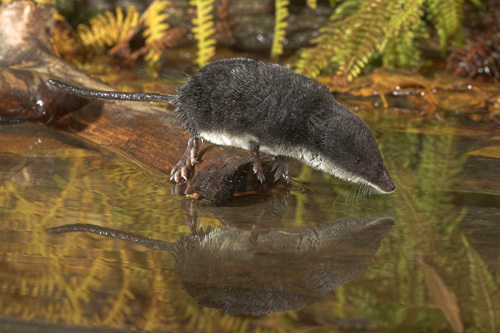Venom
The Eurasian water shrew is one of the few venomous mammals on the planet. Other mammals that are capable of secreting venomous saliva include the American short-tailed shrew (Blarina brevicauda) and the Hispaniolan solendon (Solendon parodoxus), and the platypus (Omithorhynchus anatinus), just to name a few. With the use of molecular tools, it is believe that the venom found in the saliva of the Eurasian water shrew is derived from the venom found in the saliva of Blarina Brevicauda. The venom that is secreted by these organisms is extremely harmful mammals like mice, rabbits, and cats. The venom doesn't appear to kill any of its victims, but it is intended to subdue prey items that the shrews are trying to consume. It's also intended to be used in order to subdue organisms at that are larger than they are. However, the venom is not nearly as potent in humans as it is in these other organisms, but it can cause irritation and a burning sensation at the site of the bite, which can persist for several days. Fortunately for humans, the teeth of the Eurasian water shrew are not big enough to puncture our skin.
It is believed that the venom of these organisms is administered when they are biting and chewing on their prey. It is also believed that the toxin of Blarina is most toxic in Neomys fodiens. Mammals that are able to secrete this toxin do so with the use of three different types of salivary glands: parotid, retrolingual, and the submaxillary glands. It believed that most of the venom production takes place in the submaxillary glands. When mice were bitten by Blarina, they experienced immobility and depression. When this toxin was used under experimental conditions, animals that were injected showed a multitude of behaviors. They showed signs of depression, limb paralysis, irregular respiration, convulsions, and even death. To find out more about this toxin, check out the facts.
There are no known chemical structures for the blarina toxin (BLTX) found in these mammals, but a structural form of this venom can be found here (Figure 3). For a direct link to this image, click here.

